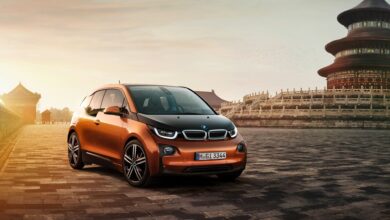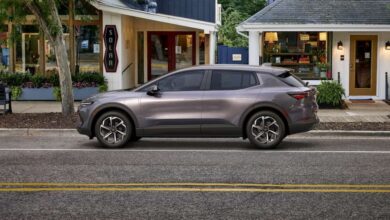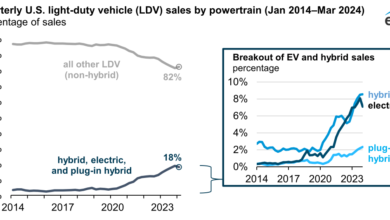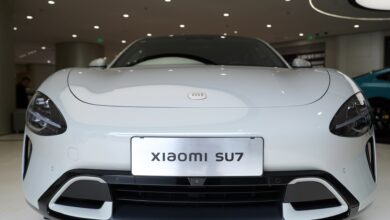Trends in electric cars – Global EV Outlook 2024 – Analysis

China
In China, where the sales share of electric cars has been high for several years, the sales-weighted average price of electric cars (before purchase subsidy) is already lower than that of ICE cars. This is true not only when looking at total sales, but also at the small cars segment, and is close for SUVs. After accounting for the EV exemption from the 10% vehicle purchase tax, electric SUVs were already on par with conventional ones in 2022, on average.
Electric car prices have dropped significantly since 2018. We estimate that around 55% of the electric cars sold in China in 2022 were cheaper than their average ICE equivalent, up from under 10% in 2018. Given the further price declines between 2022 and 2023, we estimate that this share increased to around 65% in 2023. These encouraging trends suggest that price parity between electric and ICE cars could also be reached in other countries in certain segments by 2030, if the sales share of electric cars continues to grow, and if supporting infrastructure – such as for charging – is sustained.
As reported in detail in GEVO-2023, China remains a global exception in terms of available inexpensive electric models. Local carmakers already market nearly 50 small, affordable electric car models, many of which are priced under CNY 100 000 (USD 15 000). This is in the same range as best-selling small ICE cars in 2023, which cost from CNY 70 000 to CNY 100 000. In 2022, the best-selling electric car was SAIC’s small Wuling Hongguang Mini EV, which accounted for 10% of all BEV sales. It was priced around CNY 40 000, weighing under 700 kg for a 170-km range. In 2023, however, it was overtaken by Tesla models, among other larger models, as new consumers seek longer ranges and higher-end options and digital equipment.
United States
In the United States, the sales-weighted average price of electric cars decreased over the 2018-2022 period, primarily driven by a considerable drop in the price of Tesla cars, which account for a significant share of sales. The sales-weighted average retail price of electric SUVs fell slightly more quickly than the average SUV battery costs over the same period. The average price of small and medium models also decreased, albeit to a smaller extent.
Across all segments, electric models remained more expensive than conventional equivalents in 2022. However, the gap has since begun to close, as market size increases and competition leads carmakers to cut prices. For example, in 2023-2024, Tesla’s Model 3 could be found in the USD 39 000 to USD 42 000 range, which is comparable to the average price for new ICE cars, and a new Model Y priced under USD 50 000 was launched. Rivian is expecting to launch its R2 SUV in 2026 at USD 45 000, which is much less than previous vehicles. Average price parity between electric and conventional SUVs could be reached by 2030, but it may only be reached later for small and medium cars, given their lower availability and popularity.
Smaller, cheaper electric models have further to go to reach price parity in the United States. We estimate that in 2022, only about 5% of the electric cars sold in the United States were cheaper than their average ICE equivalent. In 2023, the cheapest electric cars were priced around USD 30 000 (e.g. Chevrolet Bolt, Nissan Leaf, Mini Cooper SE). To compare, best-selling small ICE options cost under USD 20 000 (e.g. Kia Rio, Mitsubishi Mirage), and many best-selling medium ICE options between USD 20 000 and USD 25 000 (e.g. Honda Civic, Toyota Corolla, Kia Forte, Hyundai Avante, Nissan Sentra).
Around 25 new all-electric car models are expected in 2024, but only 5 of them are expected below USD 50 000, and none under the USD 30 000 mark. Considering all the electric models expected to be available in 2024, about 75% are priced above USD 50 000, and fewer than 10 under USD 40 000, even after taking into account the USD 7 500 tax credit under the IRA for eligible cars as of February 2024. This means that despite the tax credit, few electric car models directly compete with small mass-market ICE models.
In December 2023, GM stopped production of its best-selling electric car, the Bolt, announcing it would introduce a new version in 2025. The Nissan Leaf (40 kWh) therefore remains the cheapest available electric car in 2024, at just under USD 30 000, but is not yet eligible for IRA tax credits. Ford announced in 2024 that it would move away from large and expensive electric cars as a way to convince more consumers to switch to electric, at the same time as increasing output of ICE models to help finance a transition to electric mobility. In 2024, Tesla announced it would start producing a next-generation, compact and affordable electric car in June 2025, but the company had already announced in 2020 that it would deliver a USD 25 000 model within 3 years. Some micro urban electric cars are already available between USD 5 000 and USD 20 000 (e.g. Arcimoto FUV, Nimbus One), but they are rare. In theory, such models could cover many use cases, since 80% of car journeys in the United States are under 10 miles.
Europe
Pricing trends differ across European countries, and typically vary by segment.
In Norway, after taking into account the EV sales tax exemption, electric cars are already cheaper than ICE equivalents across all segments. In 2022, we estimate that the electric premium stood around -15%, and even -30% for medium-sized cars. Five years earlier, in 2018, the overall electric premium was less advantageous, at around -5%. The progressive reintroduction of sales taxes on electric cars may change these estimates for 2023 onwards.
Germany’s electric premium ranks among the lowest in the European Union. Although the sales-weighted average electric premium increased slightly between 2018 and 2022, it stood at 15% in 2022. It is particularly low for medium-sized cars (10-15%) and SUVs (20%), but remains higher than 50% for small models. In the case of medium cars, the sales-weighted average electric premium was as low as EUR 5 000 in 2022. We estimate that in 2022, over 40% of the medium electric cars sold in Germany were cheaper than their average ICE equivalent. Looking at total sales, over 25% of the electric cars sold in 2022 were cheaper than their average ICE equivalent. In 2023, the cheapest models among the best-selling medium electric cars were priced between EUR 22 000 and EUR 35 000 (e.g. MG MG4, Dacia Spring, Renault Megane), far cheaper than the three front-runners priced above EUR 45 000 (VW ID.3, Cupra Born, and Tesla Model 3). To compare, best-selling ICE cars in the medium segment were also priced between EUR 30 000 and EUR 45 000 (e.g. VW Golf, VW Passat Santana, Skoda Octavia Laura, Audi A3, Audi A4). At the end of 2023, Germany phased out its subsidy for electric car purchases, but competition and falling model prices could compensate for this.
In France, the sales-weighted average electric premium stagnated between 2018 and 2022. The average price of ICE cars also increased over the same period, though more moderately than that of electric models. Despite a drop in the price of electric SUVs, which stood at a 30% premium over ICE equivalents in 2022, the former do not account for a high enough share of total electric car sales to drive down the overall average. The electric premium for small and medium cars remains around 40-50%.
These trends mirror those of some of the best-selling models. For example, when adjusting prices for inflation, the small Renault Zoe was sold at the same price on average in 2022-2023 as in 2018-2019, or EUR 30 000 (USD 32 000). It could be found for sale at as low as EUR 25 000 in 2015-2016. The earlier models, in 2015, had a battery size of around 20 kWh, which increased to around 40 kWh in 2018‑2019 and 50 kWh in newer models in 2022-2023. Yet European battery prices fell more quickly than the battery size increased over the same period, indicating that battery size alone does not explain car price dynamics.
In 2023, the cheapest electric cars in France were priced between EUR 22 000 and EUR 30 000 (e.g. Dacia Spring, Renault Twingo E-Tech, Smart EQ Fortwo), while best-selling small ICE models were available between EUR 10 000 and EUR 20 000 (e.g. Renault Clio, Peugeot 208, Citroën C3, Dacia Sandero, Opel Corsa, Skoda Fabia). Since mid-2024, subsidies of up to EUR 4 000 can be granted for electric cars priced under EUR 47 000, with an additional subsidy of up to EUR 3 000 for lower-income households.
In the United Kingdom, the sales-weighted average electric premium shrank between 2018 and 2022, thanks to a drop in prices for electric SUVs, as in the United States. Nonetheless, electric SUVs still stood at a 45% premium over ICE equivalents in 2022, which is similar to the premium for small models but far higher than for medium cars (20%).
In 2023, the cheapest electric cars in the United Kingdom were priced from GBP 27 000 to GBP 30 000 (USD 33 000 to 37 000) (e.g. MG MG4, Fiat 500, Nissan Leaf, Renault Zoe), with the exception of the Smart EQ Fortwo, priced at GBP 21 000. To compare, best-selling small ICE options could be found from GBP 10 000 to 17 000 (e.g. Peugeot 208, Fiat 500, Dacia Sandero) and medium options below GBP 25 000 (e.g. Ford Puma). Since July 2022, there has been no subsidy for the purchase of electric passenger cars.
Elsewhere in Europe, electric cars remain typically much more expensive than ICE equivalents. In Poland, for example, just a few electric car models could be found at prices competitive with ICE cars in 2023, under the PLN 150 000 (Polish zloty) (EUR 35 000) mark. Over 70% of electric car sales in 2023 were for SUVs, or large or more luxurious models, compared to less than 60% for ICE cars.
In 2023, there were several announcements by European OEMs for smaller models priced under EUR 25 000 in the near-term (e.g. Renault R5, Citroën e-C3, Fiat e-Panda, VW ID.2all). There is also some appetite for urban microcars (i.e. L6-L7 category), learning from the success of China’s Wuling. Miniature models bring important benefits if they displace conventional models, helping reduce battery and critical mineral demand. Their prices are often below USD 5 000 (e.g. Microlino, Fiat Topolino, Citroën Ami, Silence S04, Birò B2211).
In Europe and the United States, electric car prices are expected to come down as a result of falling battery prices, more efficient manufacturing, and competition. Independent analyses suggest that price parity between some electric and ICE car models in certain segments could be reached over the 2025-2028 period, for example for small electric cars in Europe in 2025 or soon after. However, many market variables could delay price parity, such as volatile commodity prices, supply chain bottlenecks, and the ability of carmakers to yield sufficient margins from cheaper electric models. The typical rule in which economies of scale bring down costs is being complicated by numerous other market forces. These include a dynamic regulatory context, geopolitical competition, domestic content incentives, and a continually evolving technology landscape, with competing battery chemistries that each have their own economies of scale and regional specificities.
Japan
Japan is a rare example of an advanced economy where small models – both for electric and ICE vehicles – appeal to a large consumer base, motivated by densely populated cities with limited parking space, and policy support. In 2023, about 60% of total ICE sales were for small models, and over half of total electric sales. Two electric cars from the smallest “Kei” category, the Nissan Sakura and Mitsubishi eK-X, accounted for nearly 50% of national electric car sales alone, and both are priced between JPY 2.3 million (Japanese yen) and JPY 3 million (USD 18 000 to USD 23 000). However, this is still more expensive than best-selling small ICE cars (e.g. Honda N Box, Daihatsu Hijet, Daihatsu Tanto, Suzuki Spacia, Daihatsu Move), priced between USD 13 000 and USD 18 000. In 2024, Nissan announced that it would aim to reach cost parity (of production, not retail price) between electric and ICE cars by 2030.
Emerging market and developing economies
In EMDEs, the absence of small and cheaper electric car models is a significant hindrance to wider market uptake. Many of the available car models are SUVs or large models, targeting consumers of high-end goods, and far too expensive for mass-market consumers, who often do not own a personal car in the first place (see later sections on second-hand car markets and 2/3Ws).
In India, while Tata’s small Tiago/Tigor models, which are priced between USD 10 000 and USD 15 000, accounted for about 20% of total electric car sales in 2023, the average best-selling small ICE car is priced around USD 7 000. Large models and SUVs accounted for over 65% of total electric car sales. While BYD announced in 2023 the goal of accounting for 40% of India’s EV market by 2030, all of its models available in India cost more than INR 3 million (Indian rupees) (USD 37 000), including the Seal, launched in 2024 for INR 4.1 million (USD 50 000).
Similarly, SUVs and large models accounted for the majority share of electric car sales in Thailand (60%), Indonesia (55%), Malaysia (over 85%) and Viet Nam (over 95%). In Indonesia, for example, Hyundai’s Ionic 5 was the most popular electric car in 2023, priced at around USD 50 000. Looking at launch announcements, most new models expected over the 2024-2028 period in EMDEs are SUVs or large models. However, more than 50 small and medium models could also be introduced, and the recent or forthcoming entry of Chinese carmakers suggests that cheaper models could hit the market in the coming years.
In 2022-2023, Chinese carmakers accounted for 40-75% of the electric car sales in Indonesia, Thailand and Brazil, with sales jumping as cheaper Chinese models were introduced. In Thailand, for example, Hozon launched its Neta V model in 2022 priced at THB 550 000 (Thai baht) (USD 15 600), which became a best-seller in 2023 given its relative affordability compared with the cheapest ICE equivalents at around USD 9 000. Similarly, in Indonesia, the market entry of Wuling’s Air EV in 2022-2023 was met with great success. In Colombia, the best-selling electric car in 2023 was the Chinese mini-car, Zhidou 2DS, which could be found at around USD 15 000, a competitive option relative to the country’s cheapest ICE car, the Kia Picanto, at USD 13 000.



